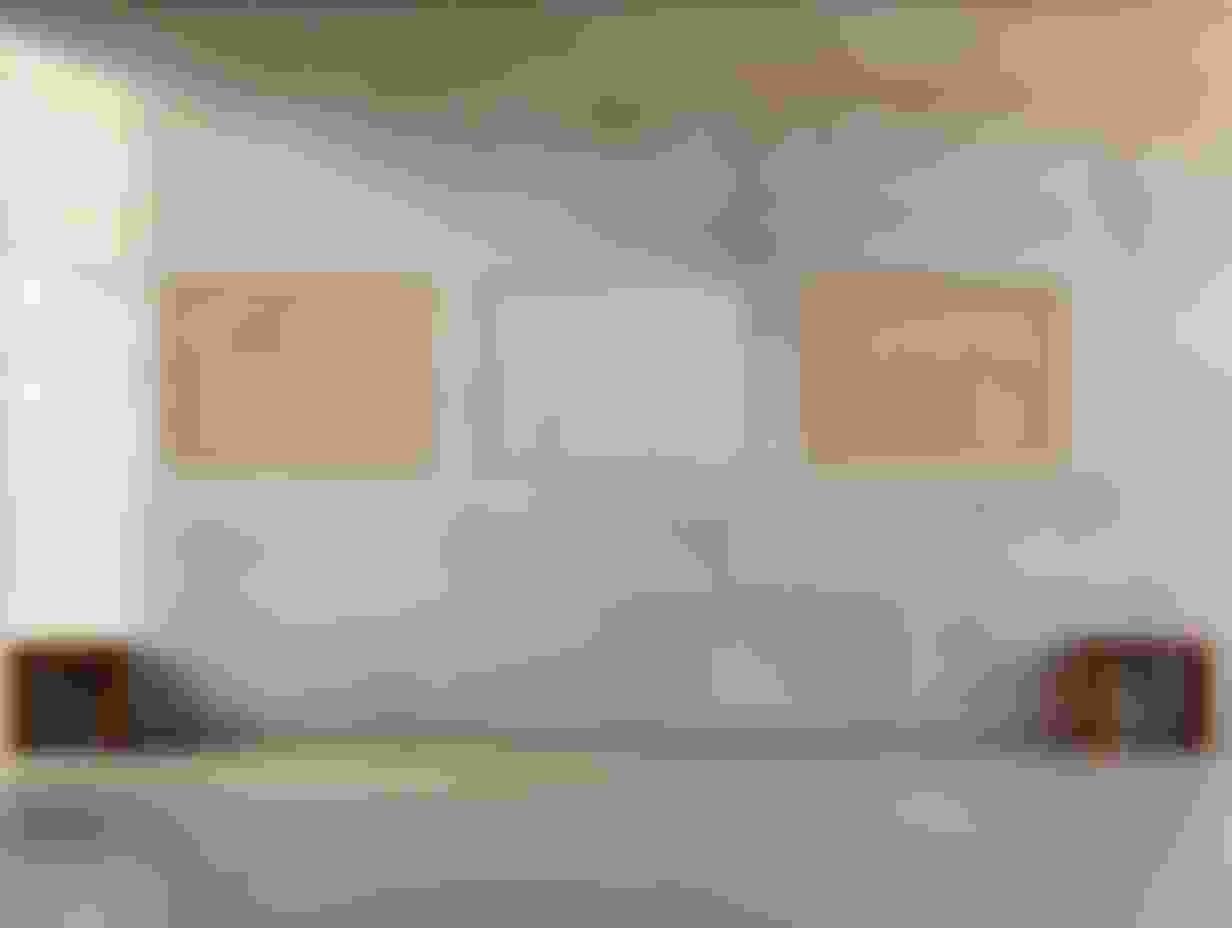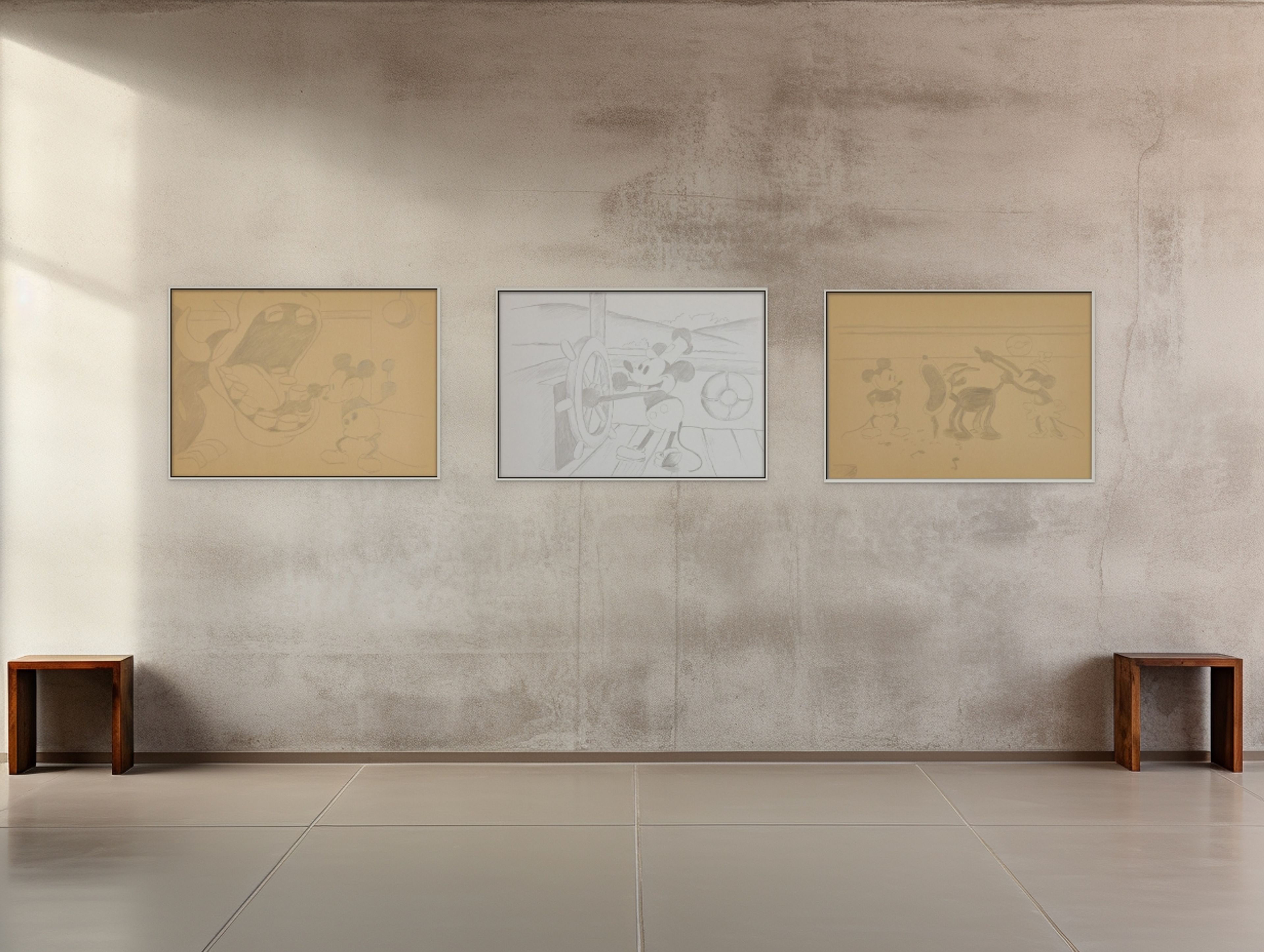The Fair Sex looks at my personal experience to understand how culture enforces certain gender norms and how that affects ones life years later. Critiquing toys we play with, how certain childhood movies can effect our self worth, the pressures of the biological clock, and learning how to find the courage to follow our dreams, . The projects final work is a tapestry symbolizing both a flag and an altarpiece --- to represent a future led equally by women.
- TitleThe Fair Sex
- Type(s)In Search of Lost Time
- Agenda
- Year(s)2021–2022
- LocationVeneto, Italy
- ReferencesWalt Disney, Hilma af Klimt, Kazimir Malevich, Leonardo Da Vinci
The Fair Sex looks at my personal experience to understand how culture enforces certain gender norms and how that affects ones life years later. Critiquing toys we play with, how certain childhood movies can effect our self worth, the pressures of the biological clock, and learning how to find the courage to follow our dreams, . The projects final work is a tapestry symbolizing both a flag and an altarpiece --- to represent a future led equally by women.
1 Human Being Born
I was born at 12:27am, on August 17th 1986.Wrapped in a pink blanket, I remained with my mother in the hospital for several days. On a bedside table, stood a ceramic figurine of Walt Disney’s Cinderella, my father’s first gift to me. As I grew and began to understand her dancing, musical silhouette as an icon of femininity, I couldn’t help but notice how this portrait of the heroine benefitted men rather than the woman purportedly at the story’s center. In Disney’s rendering, Cinderella was a walking doll with huge, child-like eyes and a tiny waist. She was demure, obedient, and decorative. She bought her freedom by donning the fancy dress and marrying the prince. I know my father didn’t intend this gift to be repressive - I was his princess.I tried to see past these aspects of the Disney figurine and looked for the saving graces in Cinderella’s story: her resourcefulness and hard work, her love of animals, and her ability to find magic in the mundane. Her story taught me that my imagination was endless and that I could create my own world.
But none of these lessons were encoded in that small ceramic figure. I began to understand how my body was similarly interpreted—that being a girl meant that I was supposed to play house and take care of dolls, games of make-believe meant to coach the reality of my later life. But I wasn’t interested in that type of play.
I wanted to construct cities for my toy dinosaurs with Legos and train sets, hide out in pillow forts, or dig in the dirt for buried treasure. As I grew older, I became an aficionado of strategy games like chess or battleship. I never felt like “one of the girls.” Sometimes, I would imagine the story of my birth and childhood as though I really were some otherworldly creature, made of fundamentally different stuff.
Playing upon stereotypes of boy and girlhood, I have recreated these different playthings from my childhood as ceramic forms sapped of color. On a simple, square surface, Cinderella terrorizes a broken landscape of Legos and model train tracks.
A photograph with the thematize color-based gender stereotypes discussing the contemporary Italian practice of celebrating the birth of a new child by decorating homes with extravagant ribbons in either pink or blue.


Another photo of me holding a ceramic baby with the inscription of me name, year, and time of birth. The sculpture weighs the exact weight that I was when I was born.


Other photographs show the white ceramic figures, lego, and brio train set in contrast with a typical Italian tile floor from the 1930s, the time frame my grandparents were living in the town where this work was made (before they immigrated to Canada).
In a video work, I crush this replica of the Cinderella figurine, a final attempt to exorcize the conventions that it upholds.


2 Mickey and Da Vinci
Growing up in a Toronto suburb—Woodbridge, the Italian neighborhood—I didn’t have much access to the wealth of Italian art history. Oddly enough, what defined art for me as a girl was Disney. I can’t remember when I started watching Disney films, and it was longer than usual before I stopped. The second-eldest of five siblings, my cinematic palate was limited by the comprehension of the youngest. The consequence was that I and my older sister were well into our teens before the barrage of animated characters ended.


As a child, I loved to draw, tackling linework as a puzzle to solve, looking at both positive and negative space for clues as to how to capture an image. I loved to draw Mickey Mouse, to chart his simple, interlacing geometries in thin pencil lines. I would draw the outlines and my sister would fill them in with color, a more arduous task that I didn't, at the time, have the patience for.


When I was older, I was advised to enter the field of illustration, perhaps even work for Disney—since I was ‘creative.’ Of course, at the time, I didn’t know the range of possible paths for someone in the arts. This was something I learned about later in life. I opted not to become an animator; my interest had always been in using my hands to make and play with material. I had no desire to focus my energies on a computer screen. I joined the family lighting business. And, 13 years later, I left it. Since 2021, I have celebrated returning to my childhood ability to let my imagination run loose and to simply make.
The silverpoint sketches are shown in a row, referencing the hand drawn slides used for the making of the film. There are multiple sizes of the works, with subtle differences that when seen one right after each other, creates a motion picture.
3 Thirty-Five
When I turned thirty-five in 2021, I froze my eggs. They wait for me in an Italian lab like a cold assurance of a life to come—a child, financial security, a permanent home, a partner to share my days and nights. For now, though, my womb is an empty universe, spread out like a celestial dome in ultrasound images silky with lines of information that echo the same resounding absence.


I suspend the passage of time, freeze it in the medium of photography. Twelve images that shift progressively like the changing faces of a chaste moon. Still, details escape. The camera seeks stability, but my hand shakes, Artemisia moves, my face turns. The photographs clutch at the traces of what is beyond capture or conservation.


4 Matriarchy Modern
A Matriarchy Modern expresses my belief that art can be a conduit for pure feeling and spiritual symbolism, while also engaging in a Modernist revision of contemporary life. Contemporary art is often wary of spirituality, preferring subject matter that is philosophical or political. However, an important reference point for my practice is the spiritualist work of one of the few female pioneers of abstract art Hilma af Klint (1862-1944), whose non-representational compositions preceded that of other early abstractionists—including Wassily Kandinsky, Kazimir Malevich, and Piet Mondrian—by almost a decade.




A member of the —af Klint was a passionate spiritualist and medium from 1879 to the end of her life. In 1896, af Klint and four other women formed a group called The Five, which was dedicated to the study of mediumship, and in 1906, af Klint was tasked by higher powers with the production of a body of abstract works that she called The Paintings for the Temple. Though af Klint concealed her revolutionary visual practice from the world, she was surrounded by a cosmopolitan community of poets, scientists, and journalists whose ideas and information entered and influenced her work.
A Matriarchy Modern also draws on Kazimir Malevich’s Suprematist movement, which If af Klint’s work was interested in giving visual form to incorporeal forces and presences, Malevich’s Suprematism aimed to express and elicit emotional responses untethered to ideas or “objective” realities. Fundamental to Malevich’s manifesto was the decoupling of art and its historical service to spiritual and secular institutions, celebrating instead the experience of the individual: “The art of the past which stood, at least ostensibly, in the service of religion and the state, will take on new life in the pure (unapplied) art of Suprematism, which will build up a new world—the world of feeling....” The movement that Malevich started in 1915 and the treatise that he published in 1927 fundamentally shaped art for the last 100 years.
Taking up the mantles of af Klint and Malevich today, I would like to continue to re-envision the future that we are building, challenging it to be a future by and for women as well as men, a future with a more equitable ecology. The tripartite work that comprises A Matriarchy Modern acts as an icon and a flag for a women-led, utopian future. Three rhomboid fabric forms billow unevenly against a wall, their black contours nonlinear and frayed by sprays of loose fiber. At the center of each lies a square of vibrant color—fuschia, magenta, and hot pink—composed of skeins of silk strands that have been halved and sewn to the black cloth surface. The simple geometric compositions of these three textile works emerge from Malevich’s Black Square (1915). However, the black shape is replaced with a pink one that—appropriating the overdetermined relationship between this color and femininity in contemporary culture—is intended to symbolize womanhood and matriarchy. The excess threads that bleed down the fabric face in A Matriarchy Modern further interrupt the clean geometries of Malevich’s original Suprematist composition. Nodding to the spiritual basis of af Klint’s work, the three-part format of the work refers to the triptych structure of church altars which are so common in the churches around my home in Italy. Finally, the choice to render this work as a textile piece was influenced by an interest in creating an object that is conceptually and materially multidimensional.
Editor
Nicole Kaack